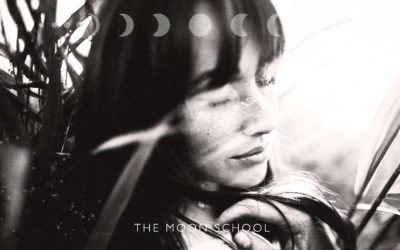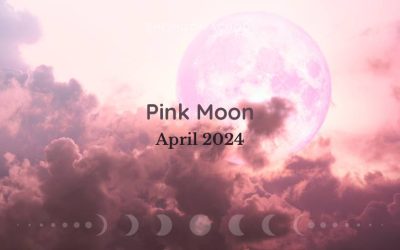I want to make it absolutely clear what it means when we say the Moon is transiting (or moving) through signs of the zodiac.
It feels like it should be straightforward: “Look at the Moon, she is occupying this part of the sky, so she is in Aquarius!” But due to a combination of ancient astrological categorization, and some gentle earthly wobbling, it can be fraught with puzzlement once you dig a little deeper.
This post may get a little sciency, but I think it is necessary to get to where we need to go, and having this information as a base, is where everything else can grow from.
Imagine our solar system as a giant spiraling disk in space. As the planets and the trillions of stars circulate around our Sun, they remain pretty close to the surface of this disk, never straying more than a few degrees up or down (Pluto makes the largest detour, roaming up to 17 degrees away from Earth’s plane, though this is still relatively little). This explains why, if you get the chance to observe the planets through a telescope, or study diagrams of their movements, they all seem to move along a fairly constricted and narrow path. This path is called the ecliptic.
In ancient times, when the first principles of astrology (and astronomy – there used not to be a distinction between the two practices) were being realised and established, the Babylonians were some of the first to section up the ecliptic, so as to better understand it. They divided the whole 360 degrees into 12 sections, each one 30 degrees. They worked out where to start, where their zero point would be, by looking into the sky on the vernal equinox. This day is around the 21st March, when day and night are of equal length across the whole of the planet, and in the northern hemisphere is known as the first day of spring, or spring equinox.
On this day, those ancient astrologers looked up into the sky, saw whereabouts in the sky the sun was residing, and set this as their zero point. At this time, the sun appeared to occupy the star constellation of Aries (though the stars would not have been visible in daylight). Moving anticlockwise, those astrologers named each 30 degree segment of the ecliptic according to the constellation of stars they could see residing within it: Aries, Taurus, Gemini, Cancer, Leo, Virgo, Libra, Scorpio, Sagittarius, Capricorn, Aquarius and Pisces, before Aries appeared once again.
Now it is vitally important to regard the difference between these 30 degree segments of the ecliptic, and the 12 star constellations that reside in space beyond them.
The reason for this is twofold. Firstly, for the purposes of correctness, the 12 star constellations simply don’t fit into neat 30 degree pockets of space. They are widely varying in size and shape and at times even overlap, making it impossible to work out where one constellation begins and another ends.
Secondly, and most importantly is a phenomenon called the precession of the equinoxes.
The Earth is not a perfect sphere. The gravitational pull of the sun and the moon cause her to bulge out at the equator and flatten at the poles. This effect, in turn, causes the Earth’s axis to gently wobble in a circular motion, around the axis of the ecliptic (which you would imagine are one and the same). This wobble makes the shape of a cone, just like that made by a childs spinning top, and as the Earth has to make up this extra distance as she spins, so the positioning of the star constellations, relative to us here on Earth, appear to slip backwards. For the earth’s axis to make one complete rotation of this cone takes around 26000 years. Now, with this timeframe in mind, the apparent slipping back of the constellations would be hardly noticeable during even a human lifetime, but over millennia it really makes its effect known. It takes around 2160 years (one twelfth of the whole rotation) for one whole zodiacal star constellation to slip back, meaning that at the vernal equinox (lets keep this as our zero point marker), the Sun appears not in the constellation of Aries, but in Pisces.
If your birthday is around this time, then I am sure you are aware that your sun sign is still Aries, (the ‘sign’ that the sun resided in at the time of your birth) and not Pisces. This is because what is important here is not the star constellations, but the portions of the sky relative to the zero point. It was a mere convenience to the astrologers of old that these portions of the sky seemed to correspond to the star constellations, hence naming the ‘signs’ after the stars. But the two things are not the same, nor do they actually meaningfully relate to each other, which is why in Western astrology fixed stars are not used as reference points.
It would be wonderfully romantic if we could look up into the night sky and observe the Moon against a backdrop of stars and from these, know exactly in which sign she sailed. But I hope I have properly explained why that is not the case, as I think it is useful to have this awareness if we are to be accurate in studying Luna’s pathway and her effect on our daily lives.
I intend to write more about the cosmic and spiritual affects of the precession of the equinoxes, it is a huge and far reaching topic, not least because we have recently passed through one of Earth’s 26000 year rotations, as documented in the Mayan calendars.







